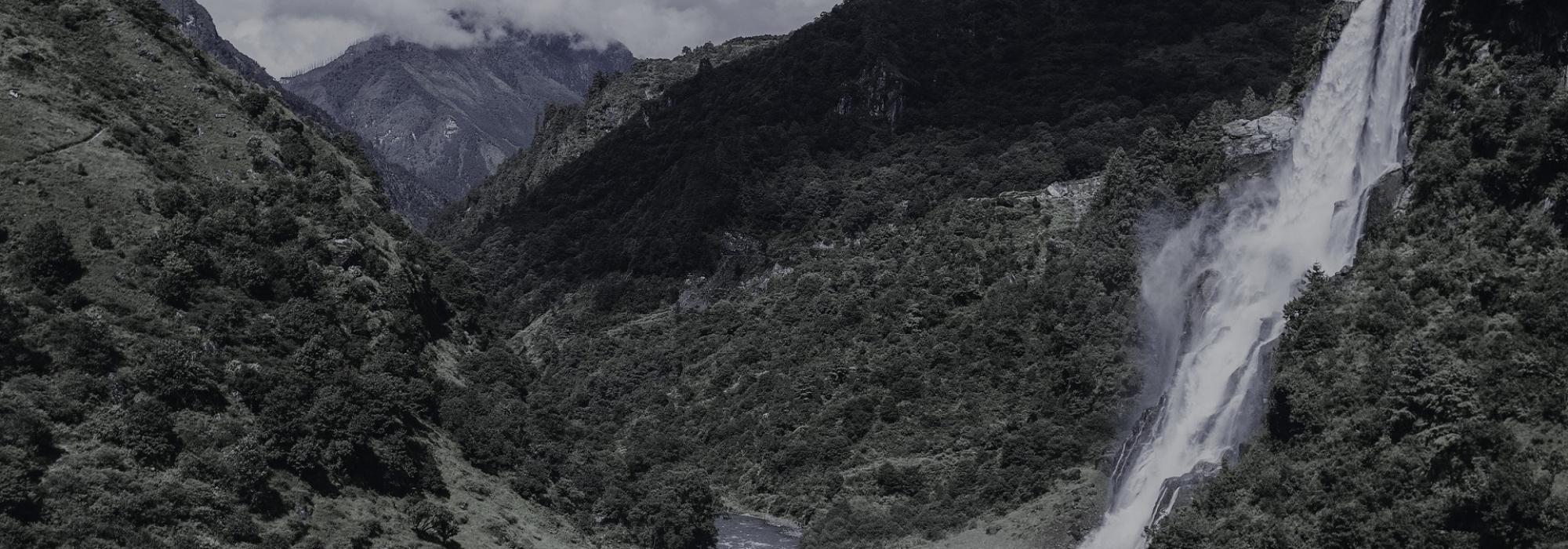ದಶರಥನು ಶ್ರವಣಕುಮಾರನ ಪ್ರಸಂಗವನ್ನು ನೆನೆಯುವಾಗ ಪ್ರಾಣಿಗಳು ನೀರು ಕುಡಿಯಲೆಂದು ಬರುವ ಗೊತ್ತಾದ ಸ್ಥಳವನ್ನು ಪ್ರಸ್ತಾವಿಸುತ್ತಾನೆ. ಆಗ ಬಳಕೆಯಾಗಿರುವ ಶಬ್ದ ನಿಪಾನಮ್ (೬೩.೨೧). ಇದನ್ನು ಮುಂದೆ ಕಾಳಿದಾಸಾದಿಗಳೂ ಬಳಸಿಕೊಂಡಿದ್ದಾರೆ. ಹೀಗೆ “ನಿ” ಎಂಬ ಉಪಸರ್ಗವೊಂದರಿಂದ “ಪಾನ” ಎಂಬ ಪದಕ್ಕೆ ಬಂದಿರುವ ಅರ್ಥಾಂತರವು ಮತ್ತೆ ಸಂಸ್ಕೃತದ ಆಡುನುಡಿತನವನ್ನೇ ವ್ಯಂಜಿಸುತ್ತಿದೆ.
ದಶರಥನ ಅರಮನೆಯ ನಟ-ಗಾಯಕರನ್ನು ವರ್ಣಿಸುವಾಗ ಪಾಣಿವಾದಕ (೬೫.೪) ಎಂಬ ಪದ ಪ್ರಯುಕ್ತವಾಗಿದೆ. ಇದು ಕೈಗಳಿಂದ ವಾದ್ಯಗಳನ್ನು ನುಡಿಸುವವರ ಹೆಸರು. ಆದರೆ ಅಡಕವಾದ ಈ ಶಬ್ದ ತನ್ನಂತೆಯೇ ಉದ್ದಿಷ್ಟಾರ್ಥವನ್ನು ಕೊಡುವುದಿಲ್ಲ. ವೀಣಾವಾದಕ, ಮೃದಂಗವಾದಕ ಮುಂತಾದ ಶಬ್ದಗಳು ಆಯಾ ವಾದ್ಯಗಳನ್ನು ನುಡಿಸುವವರನ್ನು ನೇರವಾಗಿ ನಿರ್ದೇಶಿಸುತ್ತವೆ. “ಪಾಣಿವಾದಕ”ಶಬ್ದವು ಮೂಲತಃ ಕೈ ತಟ್ಟಿ ತಾಳ ಹಾಕುವ ಚಪ್ಪಾಳೆ ಅಥವಾ ಚರ್ಚರಿಯನ್ನು ಸೂಚಿಸಿದರೂ ಕ್ರಮೇಣ ಅವನದ್ಧವಾದ್ಯಗಳ ವಾದಕರ ಅಭಿಧಾನವಾಯಿತು. ಇದನ್ನು ಈ ಅರ್ಥದಲ್ಲಿ ಇಂದಿಗೂ ಕೇರಳದವರು ಬಳಸುವುದನ್ನು ನೆನೆಯಬಹುದು. (ಉದಾ: ರಾಮ ಪಾಣಿವಾದ.)
ಇದೇ ಸಂದರ್ಭದಲ್ಲಿ ಅರಮನೆಯ ಸೂತರು ಮಂಗಳಗೀತಗಳನ್ನು ಆಲಪಿಸಿದರೆಂದೂ ಶುಭನಾಮಗಳನ್ನು ಹಾಡಿದರೆಂದೂ ಒಕ್ಕಣೆಯಿದೆ: ವ್ಯಾಹೃತಾಃ ಪುಣ್ಯಶಬ್ದಾಃ (೬೫.೬). ಇದೊಂದು ಸೊಗಸಾದ ನುಡಿಗಟ್ಟು. ಪುಣ್ಯವನ್ನು ಸಂಪಾದಿಸಿಕೊಡುವ ಹರಿ, ನಾರಾಯಣ, ಕಾಶಿ, ಗಂಗೆ ಮುಂತಾದ ಪದಗಳೇ ಪುಣ್ಯಶಬ್ದಗಳು.
ದಶರಥನ ಸಾವಿಗಾಗಿ ದುಃಖಿಸುವ ಕೌಸಲ್ಯೆ ಕೈಕೇಯಿಯು ಕಿಂಪಾಕವನ್ನು (೬೬.೬) ತಿಂದು ಗತಿಸಿದ ಲೋಭಿಯಂತೆ ತಾನೂ ಕೆಟ್ಟು ಎಲ್ಲರನ್ನೂ ಕೆಡಿಸಿದಳೆಂದು ಹಳಿಯುತ್ತಾಳೆ. ಇಲ್ಲಿ ಬಳಕೆಯಾದ “ಕಿಂಪಾಕ”ಶಬ್ದವು “ಕುತ್ಸಿತವಾದ ಪಾಕ” (ಕೆಟ್ಟ ಅಡುಗೆ), ವಿಷಾನ್ನ, ವಿಷಬೀಜ ಮುಂತಾದ ಅರ್ಥಗಳನ್ನು ಹೊಂದಿದೆ. ಮುಖ್ಯವಾಗಿ ಇದೊಂದು ನುಡಿಗಟ್ಟೆಂಬುದು ಗಮನಾರ್ಹ.
ಭರತನನ್ನು ಕರೆತರಲು ಹೊರಟ ದೂತರು ಬೊಗಸೆಯಲ್ಲಿ ನೀರನ್ನು ಕುಡಿಯುವ ವಿಪ್ರರನ್ನು ಕಂಡರೆಂದು ಒಕ್ಕಣೆಯಿದೆ: ಅವೇಕ್ಷ್ಯಾಂಜಲಿಪಾನಾಂಶ್ಚ ಬ್ರಾಹ್ಮಣಾನ್ (೬೮.೧೮). ಬೊಗಸೆಯಲ್ಲಿ ನೀರು ಕುಡಿಯುವುದು ಒಂದು ವ್ರತಾಂಗವೆಂದೂ ಅದು ಅನಾಚಾರವೆಂದೂ ಧರ್ಮಶಾಸ್ತ್ರದಲ್ಲಿ ಬಗೆಬಗೆಯಾಗಿ ವಿವರಣೆಯುಂಟು. ಅವನ್ನೆಲ್ಲ ಧ್ವನಿಸುವಂಥದ್ದು ಇಲ್ಲಿಯ ವಾಗ್ರೂಢಿ.
ಸಂಸ್ಕೃತದ ನಾಣ್ನುಡಿಗಳಲ್ಲಿ ಸೇರಿಹೋಗಿರುವ ಒಂದು ವಾಕ್ಯಖಂಡ ವ್ರಣೇ ಕ್ಷಾರಮಿವ (೭೩.೩). ಇದರ ಅರ್ಥ ಗಾಯಕ್ಕೆ ಉಪ್ಪು ಹಚ್ಚಿದಂತೆಂದು. ಭರತನು ತಂದೆಯ ಸಾವನ್ನೂ ಅಣ್ಣನ ವನಗಮನವನ್ನೂ ಕೇಳಿದಾಗ ತನಗೊದಗಿದ ದುಃಸ್ಥಿತಿಯನ್ನು ಈ ಶಬ್ದದ ಮೂಲಕ ವರ್ಣಿಸಿಕೊಂಡಿದ್ದಾನೆ. ಪರವರ್ತಿಸಾಹಿತ್ಯದಲ್ಲಿ ಈ ನುಡಿಗಟ್ಟು ಕ್ಷತೇ ಕ್ಷಾರಮಿವ ಎಂಬ ಮತ್ತೂ ಆಕರ್ಷಕವಾದ ಶಬ್ದರೂಪವನ್ನು ಹೊಂದಿ ವಾಡಿಕೆಯ ಮಾತಾಯಿತು.
ಭರತನು ಕೈಕೇಯಿಯನ್ನು ಹಳಿಯುವಾಗ “ನೀನು ಕೊರಳಿಗೆ ನೇಣು ಬಿಗಿದುಕೋ” ಎನ್ನುತ್ತಾನೆ: ರಜ್ಜುಂ ಬಧಾನ ವಾ ಕಂಠೇ (೭೧.೩೩). ಇದು ಲೋಕಭಾಷೆಗಳಲ್ಲೆಲ್ಲ ಇರುವ ಅನುದಿನದ ಆಕ್ಷೇಪಕ್ಕೆ ಸೊಗಸಾದ ಮೂಲಮಾತೃಕೆ.
ರಾಮನನ್ನು ಕಾಡಿನಿಂದ ಕರೆದೊಯ್ಯಲು ಭರತ ತೆರಳುವಾಗ ಚಿತ್ರಕೂಟದವರೆಗೆ ರಾಜಮಾರ್ಗ ಸಜ್ಜಾಗುತ್ತದೆ. ಅದನ್ನು ಸಜ್ಜು ಮಾಡಿಕೊಡುವ ಕರ್ಮಚಾರಿಗಳ ಪೈಕಿ ಸೂತ್ರಕರ್ಮವಿಶಾರದರೂ (೮೦.೧) ಇದ್ದರು. ಹಗ್ಗದ ಮೂಲಕ ನೆಲವನ್ನು ಅಳೆದು ಹಾದಿಯ ಉದ್ದಗಲಗಳನ್ನು ನಿಶ್ಚಯಿಸಿಕೊಡುವವರು “ಸೂತ್ರಕರ್ಮವಿಶಾರದರು”. ಇದೊಂದು ನುಡಿಗಟ್ಟಿನಂಥ ವೃತ್ತಿವಾಚಕ ಶಬ್ದ. ಇದಕ್ಕೆ ಸಂದರ್ಭೋಚಿತವಾಗಿ ನೇಯ್ಗೆಯವರೇ ಮುಂತಾದ ವಿಭಿನ್ನ ಅರ್ಥಗಳುಂಟು.
ರಾಮ-ಲಕ್ಷ್ಮಣರು ಕಾಡಿನಲ್ಲಿ ಸಂಧ್ಯಾವಂದನೆಯನ್ನು ಮಾಡುತ್ತಿದ್ದ ಕ್ರಮವನ್ನು ಗುಹನು ಭರತನಿಗೆ ಹೇಳುವಾಗ ವಾಗ್ಯತಾಃ (೮೭.೧೮) ಎಂಬ ಶಬ್ದವನ್ನು ಬಳಸುತ್ತಾನೆ. ಮಾತಿನ ಮೇಲೆ ಹತೋಟಿಯುಳ್ಳವರು, ಅರ್ಥಾತ್ ಮೌನಿಗಳು, ವಾಗ್ಯತರು. ಧರ್ಮಶಾಸ್ತ್ರಗಳಲ್ಲಿ ವಾಙ್ನಿಯಮವನ್ನು ಪಾಲಿಸುವವರೇ ವಾಗ್ಯತರೆಂದು ಹೇಳಲಾಗಿದೆ.
ಭರತನ ಆಗಮನವನ್ನು ಶಂಕಿಸಿದ ಲಕ್ಷ್ಮಣ ಅವನನ್ನು ಪೂರ್ವಾಪಕಾರೀ (೯೬.೨೪) ಎಂದು ಆಕ್ಷೇಪಿಸುತ್ತಾನೆ. ಈ ಮಾತಿಗೆ “ಈ ಮುನ್ನ ಅಪಕಾರ ಮಾಡಿದವನು” ಎಂದೂ “ಮೊದಲಿಗೇ ಅಪಕಾರ ಮಾಡಿ ದುಷ್ಟತನವನ್ನು ತೋರಿದವನು” ಎಂದೂ ಅರ್ಥವುಂಟು. ಇದೊಂದು ಬಗೆಯ ನುಡಿಗಟ್ಟೇ ಹೌದು. ಆಗ ರಾಮನು ತಮ್ಮನನ್ನು ಸಮಾಧಾನಿಸುತ್ತ, “ನಾನು ಎಲ್ಲರ ಹಿತಕ್ಕಾಗಿ ಮಾತ್ರ ರಾಜ್ಯವನ್ನು ಬಯಸುವವನಲ್ಲದೆ ಸ್ವಾರ್ಥಕ್ಕಾಗಿ ಅಲ್ಲ; ಇದನ್ನು ನನ್ನ ಆಯುಧದ ಮೇಲೆ ಪ್ರಮಾಣ ಮಾಡಿ ಹೇಳುತ್ತೇನೆ” ಎನ್ನುತ್ತಾನೆ: ಸತ್ಯೇನಾಯುಧಮಾಲಭೇ (೯೭.೬). ಇದಂತೂ ಸೊಗಸಾದ ನುಡಿಗಟ್ಟು.
ಮುಂದೆ ರಾಮನು ವನವಾಸದಲ್ಲಿ ತಾನು ಅನುದಿನವೂ ಬಳಸುವ ಆಹಾರವನ್ನೇ ಗತಿಸಿದ ತಂದೆಗೆ ಪಿಂಡರೂಪದಲ್ಲಿ ಸಮರ್ಪಿಸಿದಾಗ ಅದನ್ನು ಕಂಡ ಕೌಸಲ್ಯೆ ಸಂಕಟಪಡುತ್ತ, “ತಾನು ಯಾವುದನ್ನು ತಿನ್ನುವನೋ ಅದನ್ನೇ ತನ್ನ ದೇವರಿಗೂ ಒಪ್ಪಿಸುವನೆಂಬ ಗಾದೆಯ ಮಾತು ಹೀಗೆ ಸತ್ಯವಾಯಿತಲ್ಲಾ!” ಎಂದು ಹೇಳುತ್ತಾಳೆ: ಯದನ್ನಃ ಪುರುಷೋ ಭವತಿ ತದನ್ನಾಸ್ತಸ್ಯ ದೇವತಾಃ (೧೦೩.೧೫). ಮೂಲದಲ್ಲಿ ಇದನ್ನು “ಲೌಕಿಕೀ ಶ್ರುತಿಃ”, “ಗಾದೆಮಾತು” ಎಂದು ಹೇಳಿರುವುದು ಗಮನಾರ್ಹ.
ಭರತನು ತನ್ನ ಪ್ರಾಮಾಣಿಕತೆಯನ್ನು ನಿವೇದಿಸಿಕೊಳ್ಳುತ್ತ ತಾನೆಂದೂ ರಾಜ್ಯಕ್ಕಾಗಿ ಹಾತೊರೆಯಲಿಲ್ಲ, ತಂದೆ-ತಾಯಿಗಳನ್ನು ಇದಕ್ಕಾಗಿ ಒಡಂಬಡಿಸಲಿಲ್ಲ, ಅಷ್ಟೇಕೆ ಅಣ್ಣನನ್ನು ಕಾಡಿಗೆ ಕಳುಹಲು ಅನುಮತಿಸಲೂ ಇಲ್ಲವೆಂದು ದುಃಖಿಸುತ್ತಾನೆ. ಈ ಸಂದರ್ಭದಲ್ಲಿ ನಾನುಜಾನಾಮಿ ರಾಘವಮ್ (೧೧೧.೨೫) ಎಂಬ ಪದಪುಂಜ ಬಳಕೆಯಾಗಿದೆ. ಇದೊಂದು ಸುಂದರವಾದ ನುಡಿಗಟ್ಟು. “ಅನುಜಾನಾತಿ” ಎಂದರೆ “ಒಪ್ಪಿಗೆಯೀಯುತ್ತಾನೆ” ಎಂದರ್ಥ. “ಅನುಜ್ಞೆ” ಎಂಬ ಪದ ಇದಕ್ಕೆ ಸಂಬಂಧಿಸಿದುದೇ.
ರಾಮನ ಪರವಾಗಿ ತಾನೇ ವನವಾಸವನ್ನು ಮಾಡುವೆನೆಂದು ಹಠತೊಟ್ಟ ಭರತನಿಗೆ ರಾಮನು “ಈ ಬಗೆಯಲ್ಲಿ ಒಬ್ಬರ ಪರವಾಗಿ ಮತ್ತೊಬ್ಬರು ಕರ್ತವ್ಯಗಳನ್ನು ಗುತ್ತಿಗೆ ಹಿಡಿಯುವುದು ಹೀನಾಯ” ಎಂದು ತಿಳಿಯಹೇಳುತ್ತಾನೆ. ಉಪಧಿರ್ನ ಮಯಾ ಕಾರ್ಯಃ (೧೧೧.೨೯). “ಉಪಧಿಃ” ಎಂಬ ಪದಕ್ಕೆ ಕೋಶಗಳಲ್ಲಿ ಕಪಟ, ವಂಚನೆ, ಸುತ್ತುಬಳಸಾದ ವರ್ತನೆ ಎಂಬೆಲ್ಲ ಅರ್ಥಗಳಿದ್ದರೂ ಸದ್ಯದ ಸಂದರ್ಭದಲ್ಲಿ ಇದನ್ನು “ಒಬ್ಬರ ಪರವಾಗಿ ಮತ್ತೊಬ್ಬರು ಮಾಡುವ ಅಡ್ಡದಾರಿಯ ಕೆಲಸ” ಎಂಬರ್ಥದಲ್ಲಿ ಗ್ರಹಿಸುವುದು ಯುಕ್ತ.
ರಾಮ-ಭರತರ ಉದಾರವರ್ತನೆಯನ್ನು ಕಂಡ ಮಹರ್ಷಿಗಳಿಗೆಲ್ಲ ಆನಂದವಾದುದನ್ನು ಆದಿಕವಿಗಳು ರೋಮಹರ್ಷಣ (೧೧೨.೧) ಎಂಬ ಶಬ್ದದ ಮೂಲಕ ಸೂಚಿಸಿದ್ದಾರೆ. ಇದು ರಾಮಾಯಣವೂ ಸೇರಿದಂತೆ ಅನೇಕಕೃತಿಗಳಲ್ಲಿ ಬಳಕೆಗೊಂಡು ಸವಕಲುಮಾತೆನಿಸಿದೆಯಾದರೂ ಮೂಲತಃ ಇಲ್ಲಿ ಸೊಗಸಾದ ಉಪಚಾರವಕ್ರತೆಯಿದೆ. ಆನಂದಾನುಭವದ ಅಭಿವ್ಯಕ್ತಿಗಳ ಪೈಕಿ ರೋಮಾಂಚನವೂ ಒಂದು. ನವಿರು ನಿಮಿರೇಳುವ ಈ ಬಗೆಯ ಸಾತ್ತ್ವಿಕವಿಕ್ರಿಯೆಯನ್ನು ರೋಮಗಳಿಗೇ ಹರ್ಷವಾಯಿತು ಎಂಬಂತೆ ವರ್ಣಿಸುವಲ್ಲಿ ಹೃದ್ಯವಾದ ಕವಿಕಲ್ಪನೆಯಿದೆ.
ರಾಮನು ಪಾದುಕಾಪ್ರದಾನ ಮಾಡುವಾಗ ಭರತನನ್ನು ಮಡಿಲಿನಲ್ಲಿರಿಸಿಕೊಂಡು ಅನುನಯಿಸಿದನೆಂಬ ವರ್ಣನೆಯುಂಟು: ತಮಂಕೇ ಭ್ರಾತರಂ ಕೃತ್ವಾ ರಾಮೋ ವಚನಮಬ್ರವೀತ್ (೧೧೨.೧೫). ಇಲ್ಲಿ “ಮಡಿಲಿಗೇರಿಸಿಕೊಳ್ಳುವುದು” ಎಂಬ ಅಭಿಪ್ರಾಯವನ್ನು “ಅಂಕೇ ಕೃತ್ವಾ” ಎಂಬ ನುಡಿಗಟ್ಟಿನ ಮೂಲಕ ಸಾಧಿಸಲಾಗಿದೆ.
ರಾಮನಿಲ್ಲದ ಅಯೋಧ್ಯೆಯನ್ನು ಆದಿಕವಿಗಳು ಹತ್ತಾರು ಹೃದಯಂಗಮವಾದ ಪದ್ಯಗಳಿಂದ ಬಣ್ಣಿಸಿದ್ದಾರೆ. ಅಲ್ಲೊಂದೆಡೆ ಆ ನಗರವು ಜಡಿಮಳೆ ಬರುತ್ತಿರುವ ಶುಕ್ಲಪಕ್ಷದ ರಾತ್ರಿಯಂತಿತ್ತೆಂದು ಒಕ್ಕಣಿಸುತ್ತಾರೆ: ಸಾಸಾರೇವಾರ್ಜುನೀ ಕ್ಷಪಾ (೧೧೪.೨೮). ಇಲ್ಲಿ ಬಳಕೆಯಾದ “ಆರ್ಜುನೀ ಕ್ಷಪಾ”, “ಬಿಳಿಯಿರುಳು” ಎಂಬ ವಿಶಿಷ್ಟವಾದ ಪದಪುಂಜವು ಶುಕ್ಲಪಕ್ಷದ ರಾತ್ರಿಯನ್ನು ಸೂಚಿಸುವುದು ಗಮನಾರ್ಹ.
ಅನಸೂಯಾದೇವಿಯು ಸೀತೆಗೆ ಪಾತಿವ್ರತ್ಯವನ್ನು ಕುರಿತು ಹೇಳುವಾಗ “ಜಗತ್ತಿನಲ್ಲಿ ಹಲವರು ಹೆಂಗಸರು ತಾವು ತಮ್ಮ ಗಂಡಂದಿರ ಒಡತಿಯರಾಗಬೇಕೆಂದೂ ಅವರು ತಮ್ಮ ಭೋಗಜೀವನವನ್ನು ಈಡೇರಿಸಬೇಕೆಂದೂ ಬಯಸುತ್ತಿರುತ್ತಾರೆ” ಎನ್ನುತ್ತಾಳೆ. ಈ ಎಲ್ಲ ಅರ್ಥವನ್ನೂ ವ್ಯಂಜಿಸಲು ಆದಿಕವಿಗಳು ಭರ್ತೃನಾಥಾಃ (೧೧೭.೨೬) ಎಂಬ ಪದವನ್ನು ಬಳಸಿದ್ದಾರೆ. ಇದು ಬಹ್ವರ್ಥಗ್ರಾಸಿಯಾಗಿ ಶೋಭಿಸಿದೆ. ಇದೇ ಸಂದರ್ಭದಲ್ಲಿ ಆ ತಪೋಧನೆಯು ತನ್ನ ಪಾತಿವ್ರತ್ಯದ ಮಹಿಮೆಯಿಂದ ಸೀತೆಗಾಗಿ ಏನನ್ನಾದರೂ ಸಾಧಿಸಿಕೊಟ್ಟು ಅವಳಿಗೆ ಮುದವನ್ನೀಯಬಲ್ಲೆನೆಂದು ಹೇಳುತ್ತಾಳೆ. ಆಗ ತ್ವಾಂ ಛಂದಯೇ (೧೧೮.೧೪) ಎಂಬ ವಿಶಿಷ್ಟಪ್ರಯೋಗವಿದೆ. ಛಂದಃಶಬ್ದಕ್ಕೆ ಇರುವ ನಾನಾರ್ಥಗಳನ್ನು ಗಮನಿಸಿ ಸದ್ಯದ ತಾತ್ಪರ್ಯವನ್ನು ಹೊರಡಿಸಬಹುದು.
ಅರಣ್ಯಕಾಂಡ
ಈ ಕಾಂಡದ ಮೊದಲಿಗೇ ಋಷ್ಯಾಶ್ರಮಗಳಲ್ಲಿಯ ವೇದಘೋಷವನ್ನು ವರ್ಣಿಸುವಾಗ ಆದಿಕವಿಗಳು ಬ್ರಹ್ಮಘೋಷ (೧.೬) ಎಂಬ ಶಬ್ದವನ್ನು ಬಳಸಿದ್ದಾರೆ. ಬ್ರಹ್ಮವೆಂಬುದಕ್ಕೆ ವೇದವೆಂದೂ ಅರ್ಥವಿದೆ. ಇದು ಹೆಚ್ಚಾಗಿ ಬಳಕೆಯಲ್ಲಿಲ್ಲದ ಸುಂದರಪದ.
ವಿರಾಧನೆಂಬ ರಾಕ್ಷಸನ ವಿಕಟರೂಪವನ್ನು ವರ್ಣಿಸುವಾಗ ಆತನು ಗಂಭೀರಾಕ್ಷನೆಂದೂ ವಿಷಮೋದರನೆಂದೂ (೨.೫) ಆದಿಕವಿಗಳು ಹೇಳುತ್ತಾರೆ. ಈ ಪ್ರಕಾರ ಅವನು ಗುಳಿಬಿದ್ದ ಕಣ್ಣವನು ಮತ್ತು ಅಡ್ಡಾದಿಡ್ಡಿ ಬೆಳೆದ ಹೊಟ್ಟೆಯವನೆಂದು ತಿಳಿಯುತ್ತದೆ. ಕುರೂಪವನ್ನು ಇಷ್ಟು ಸೊಗಸಾಗಿ ವರ್ಣಿಸಿರುವುದು ಒಂದು ಸೊಗಸು.
ಸುತೀಕ್ಷ್ಣಮಹರ್ಷಿಗಳು ರಾಮನನ್ನು ಬೀಳ್ಕೊಡುವಾಗ “ನಿನ್ನ ದಾರಿ ಸುಗಮವಾಗಲಿ”, ಅರಿಷ್ಟಂ ಗಚ್ಛ ಪಂಥಾನಮ್ (೮.೧೧) ಎನ್ನುತ್ತಾರೆ. ಇದೊಂದು ಸೊಗಸಾದ ಬೀಳ್ಕೊಡುಗೆಯ ನುಡಿಬಗೆ. ಆಗ ಅವರು ರಾಮನಿಗೆ “ನೀನು ಕಣ್ಣಿಗೆ ಹಿತವಾಗುವಂಥ ಕಾಡುಮೇಡುಗಳನ್ನು ಕಾಣುವೆ” ಎಂದು ದಾರಿ ತಿಳಿಸುತ್ತಾರೆ. ಆಗ ದೃಷ್ಟಿರಮ್ಯಾಣಿ (೮.೧೫) ಎಂಬ ಪದ ಬಳಕೆಯಾಗಿದೆ. ಇದೊಂದು ಹೃದಯಂಗಮವಾದ ಸಮಾಸ.
ಸೀತೆಯು ರಾಕ್ಷಸವೈರ ತಮಗೆ ಬೇಕಿಲ್ಲವೆಂದು ರಾಮನಿಗೆ ಹೇಳುವಾಗ “ಕೆಲವೊಮ್ಮೆ ನೀನು ಬಾಣಗಳನ್ನು ವೆಚ್ಚ ಮಾಡಬೇಕಾಗಬಹುದು” ಎನ್ನುತ್ತಾಳೆ: ಕಚ್ಚಿತ್ ಕುರ್ಯಾಃ ಶರವ್ಯಯಮ್ (೯.೧೪). ಇಲ್ಲಿ “ಶರವ್ಯಯ” ಎಂದರೆ ಬಾಣಪ್ರಯೋಗವೆಂದು ತಾತ್ಪರ್ಯ. ಅದನ್ನು ಹೀಗೆ ಪರ್ಯಾಯವಾಗಿ ತಿಳಿಸುವಲ್ಲಿ ಮಿಗಿಲಾದ ಸೊಗಸಿದೆ. ಇದೇ ಸಂದರ್ಭದಲ್ಲಿ ಅವಳು ರಾಮನಿಗೆ ತಾನು ಹೇಳುತ್ತಿರುವ ಹಿತವಾಕ್ಯಗಳೆಲ್ಲ ಕೇವಲ ಆತನ ಮೇಲಣ ಪ್ರೀತಿ-ಗೌರವಗಳಿಂದ ಹುಟ್ಟಿವೆ ಹಾಗೂ ಅವು ಕೇವಲ ನೆನಪಿಸಲಲ್ಲದೆ ಕಲಿಸಲಲ್ಲ ಎಂದು ನಿವೇದಿಸುತ್ತಾಳೆ: ಸ್ನೇಹಾಚ್ಚ ಬಹುಮಾನಾಚ್ಚ ಸ್ಮಾರಯೇ ತ್ವಾಂ ನ ಶಿಕ್ಷಯೇ (೯.೨೪). ಇದೊಂದು ಸುಂದರವಾದ ವಾಗ್ರೂಢಿಯಾಗಿ ಇಂದಿಗೂ ಬಳಕೆಯಲ್ಲಿದೆ. ಇದೇ ಸನ್ನಿವೇಶದಲ್ಲಿ ಅವಳು ಮುಂದುವರಿದು ತಾವಿರುವ ನಾಡಿನ ರೀತಿ-ನೀತಿಗಳನ್ನು ಗೌರವಿಸಬೇಕೆಂದು ಹೇಳುತ್ತಾಳೆ: ದೇಶಧರ್ಮಸ್ತು ಪೂಜ್ಯತಾಮ್ (೯.೨೭). ಇದು ಆಯಾ ದೇಶಾಚಾರ-ಕಾಲಾಚಾರಗಳನ್ನು ಪಾಲಿಸಬೇಕೆಂಬ ತಾತ್ಪರ್ಯವನ್ನೇ ಹೊಂದಿದೆ.
ಅಗಸ್ತ್ಯರು ಸೀತೆಯನ್ನು ಕಂಡಾಗ ಆಕೆಯು ಎದ್ದುತೋರುವಂತೆ ಬಳಲಿದ್ದಾಳೆಂದು ಹೇಳುತ್ತಾರೆ. ಈ ಸಂದರ್ಭದಲ್ಲಿ ವ್ಯಕ್ತಮುತ್ಕಂಠತೇ (೧೩.೨) ಎಂಬ ನುಡಿಗಟ್ಟು ಬಳಕೆಯಾಗಿದೆ. ಇದರ ಸ್ವಾರಸ್ಯ ಸುವೇದ್ಯ. ಹಾಗೆಯೇ ಅವರು ಮುಂದುವರಿದು “ಸಾಮಾನ್ಯವಾಗಿ ಸ್ತ್ರೀಯರು ಅನುಕೂಲಪರಿಸ್ಥಿತಿಯಲ್ಲಿರುವ ಗಂಡನನ್ನು ಓಲೈಸುತ್ತ ಪ್ರತಿಕೂಲಪರಿಸ್ಥಿತಿಯಲ್ಲಿ ಇರುವನನ್ನು ಉಪೇಕ್ಷಿಸುತ್ತಾರೆ” ಎಂದು ಒಕ್ಕಣಿಸುತ್ತಾರೆ: ಸಮಸ್ಥಮನುರಜ್ಯಂತಿ ವಿಷಮಸ್ಥಂ ತ್ಯಜಂತಿ ಚ (೧೩.೫). ಇದೂ ಸಹ ಚೆಲುವಾದ ನುಡಿಗಟ್ಟಿನಂತೆ ಬಳಕೆಯಾಗಿದೆ. ಅಂತೆಯೇ ಅವರು ರಾಮನ ವನವಾಸದ ಅವಧಿಯಲ್ಲಿ ಸಾಕಷ್ಟು ಕಾಲ ಕಳೆದಿದೆಯೆಂದು ಹೇಳುತ್ತಾರೆ: ಕಾಲೋऽಯಂ ಗತಭೂಯಿಷ್ಠಃ (೧೩.೧೫). ಇದಂತೂ ಅಪ್ಪಟ ನುಡಿಗಟ್ಟಾಗಿದೆ.















































